2004 Mitsubishi Lancer Evo VIII vs Subaru Impreza WRX STi vs FPV GT vs HSV Clubsport comparison
Two tribes go to war in the battle for Asia-Pacific sports-sedan supremacy. The Mitsubishi Evo VIII and Subaru WRX Impreza...
Mitsubishi has described the devotion of fans of the Lancer Evolution range as ‘religious’. Subaru fanatics around the world will of course reject this claim to the spiritual, but that’s part of the reason that the legendary rivalry between the two Japanese manufacturers in the forests has created something that equates to the classic Ford and Holden battles in the V8 racing arena.
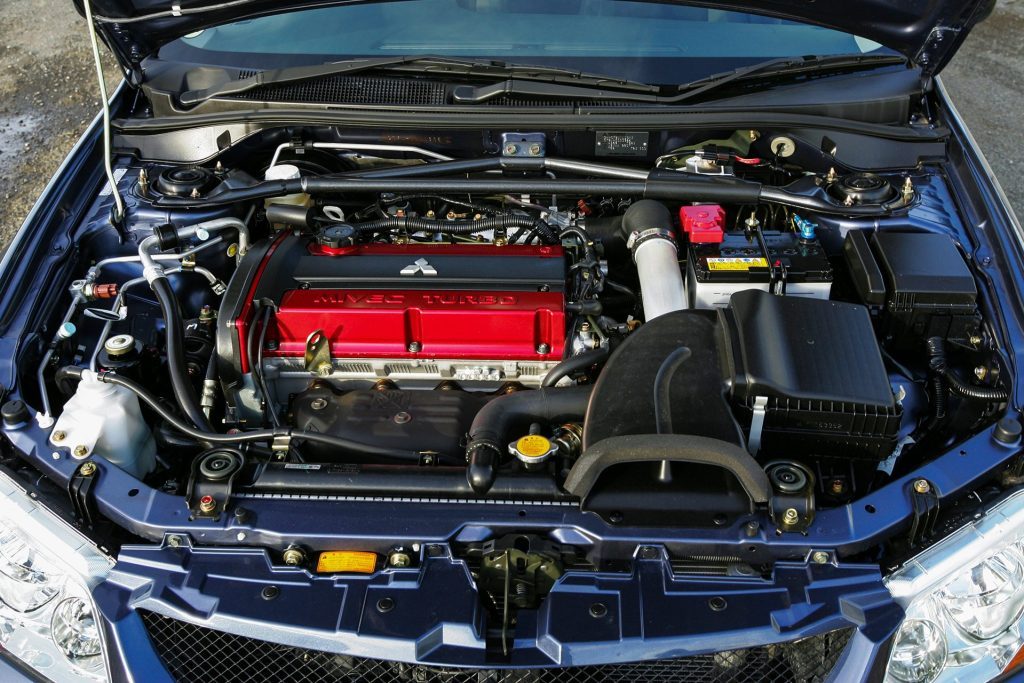
Bred for the World Rally Championship, the Mitsubishi Evolution line-up, numbered from ‘one’ to ‘ten’ has become a legend in its own lifetime. The catalogue of the Evo successes over the past decade includes four WRC Drivers’ Championships and one Manufacturers’ title.
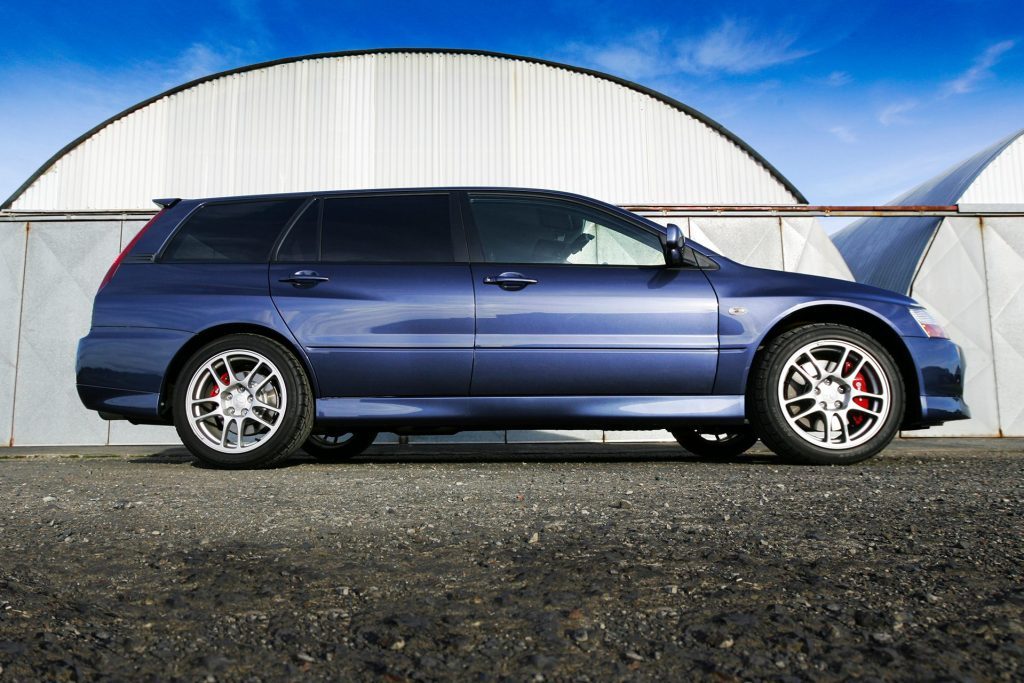
All that’s been missing has been a wagon to combat Subaru’s five-door Impreza WRX STi, but thankfully Mitsubishi finally saw the light and rectified that in 2005 with the creation of the Lancer Evolution IX wagon. The downside for anyone outside Japan is that only 2500 were made in both the five-speed automatic (GT-A) and six-speed manual (GT) formats, and they were released only onto the local Japanese market.
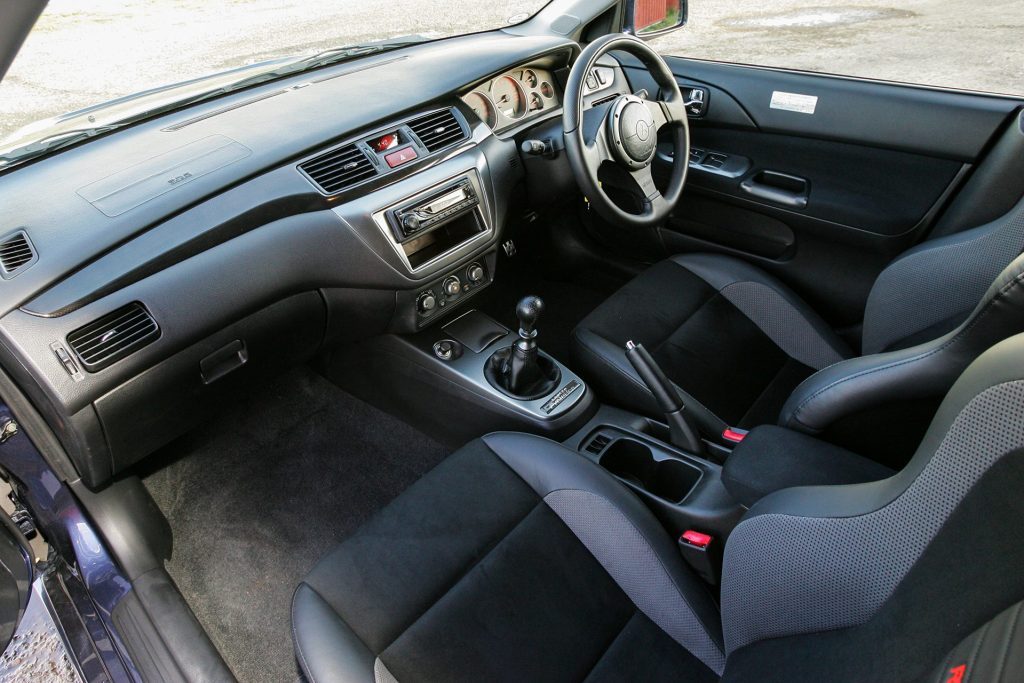
Derived from the Lancer Evolution IX sedan launched in March 2005, the Lancer Evo Wagon uses the body side panels and roof panel from the standard Lancer wagon, with reinforcements mainly focused on the rear-end to create a lightweight and very stiff structure. The same aluminium bonnet and front fenders as the sedan carry over, with the wagon-only rear blister fender mirroring the design cues of the front.
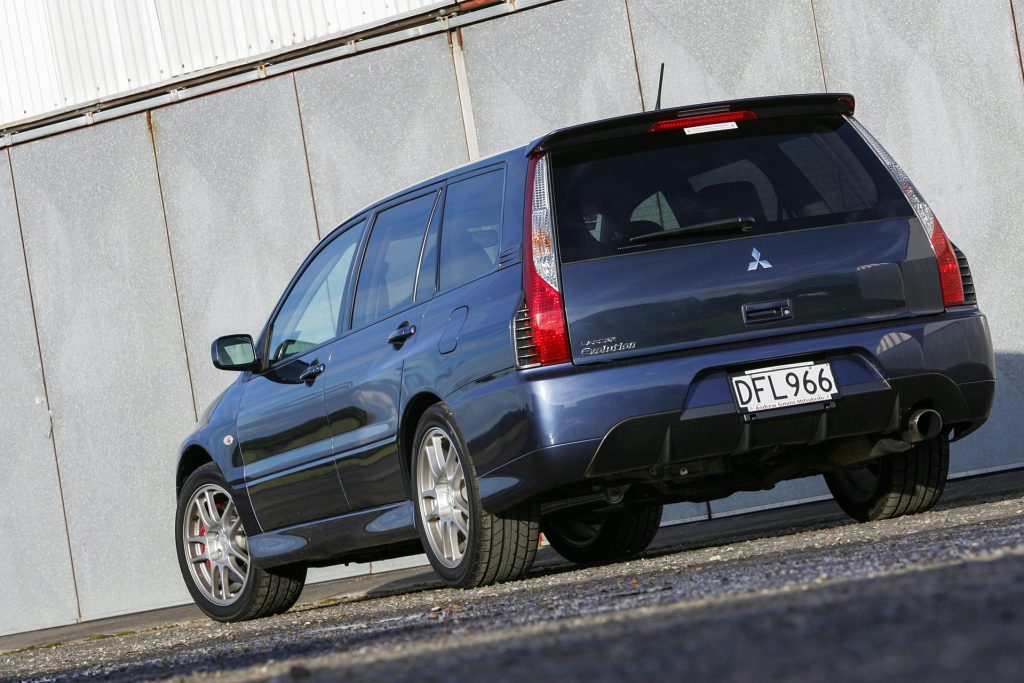
Underneath, the wagon is pure Evo, with the same floorpan as the four-door Evo IX, and identical powertrain, 4WD system, Brembo brakes, and suspension. The GT uses the latest 2.0 litre, 4G63-type MIVEC intercooled and turbocharged engine, which produces 206kW (280bhp) at 6500rpm, and 392Nm of gravel-spraying torque at 3000rpm. It is a powertrain that has received much praise from motoring writers all over the globe.
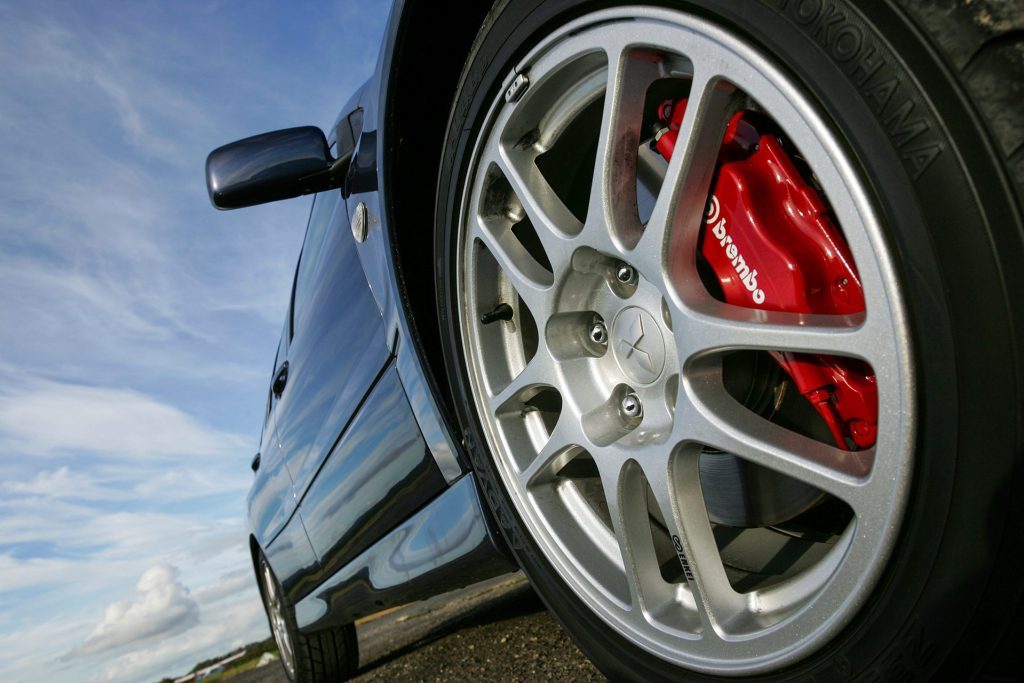
The wagon also boasts the sedan’s active and adjustable centre differential, but without the sophisticated ‘super active’ yaw control that attempts to keep the handling safe and understeer in check. A glance at the interior, and you’ll see the wagon shares the same Momo steering wheel as the sedan, as well as the aluminium accelerator, brake, and clutch pedals. Recaro front bucket seats keep the driver and passenger snug, upholstered with suede and leather, but have lower thigh bolsters to aid easy entry and exit to and from the wagon. The mainly black cabin is detailed with a carbon-fibre dashboard trim, Evo badging, and a six-speaker (NZ-spec) JVC CD/stereo system.
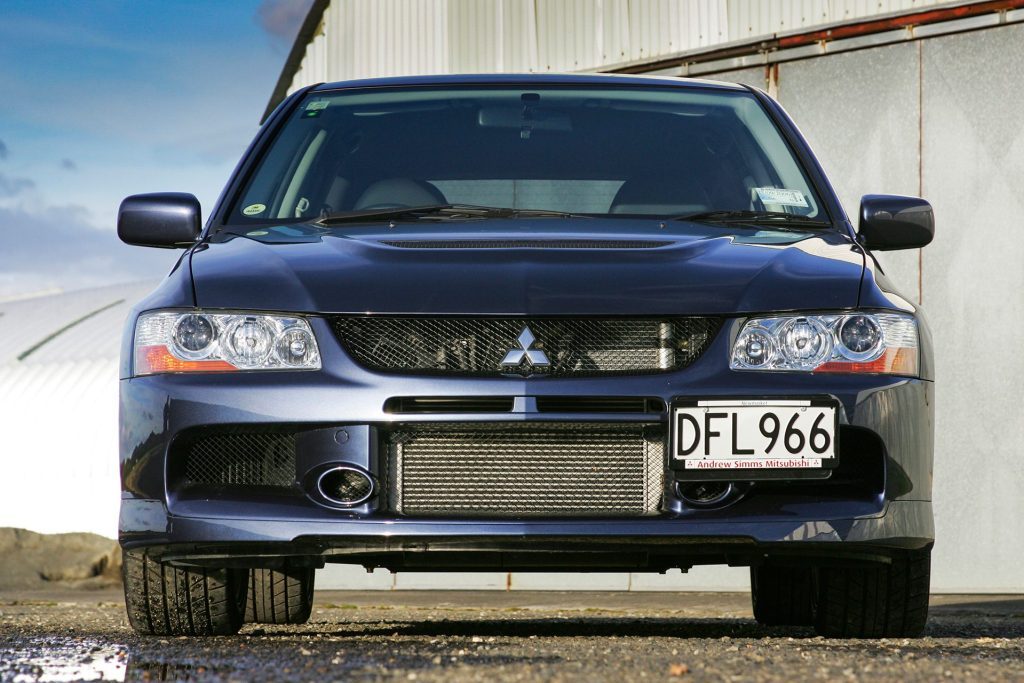
The Evo IX wagon also comes standard with air conditioning, twin airbags, electric windows and mirrors, and safety features like EBD-assisted ABS. The system apportions brake pressure to each of the four wheels independently using information gathered from lateral-G and vehicle-speed sensors, plus a steering-angle sensor that detects steering inputs. The result is improved steering response under braking. The Active Centre Diff (ACD) incorporates an electronically controlled hydraulic multi-plate clutch, and has three separate modes: Tarmac (Asphalt), Gravel, and Snow.
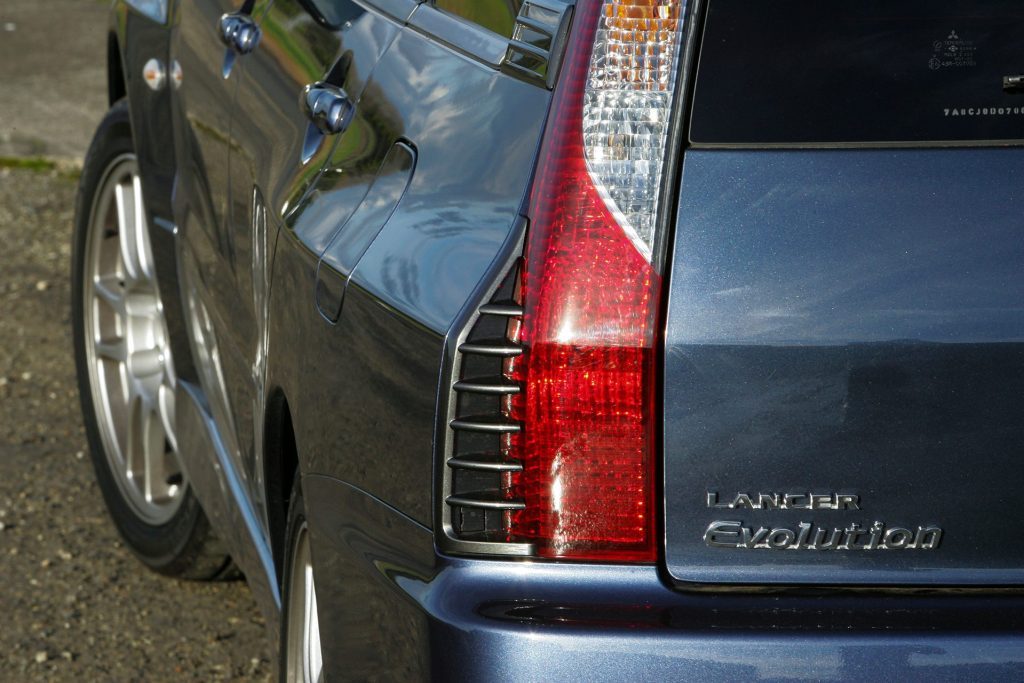
NZ Autocar managed to get hold of what was the only Evo IX wagon available for sale in Auckland at the time (according to the sales team at Andrew Simms Mitsubishi). Presented in a striking dark metallic-blue, the six-speed manual Evo wagon was a brand-new import, with just 700 kilometres on the clock. Outwardly similar to the standard Lancer wagon, apart from the obvious wheel, rear diffuser, and wing packages, there are differences also in its rear guards and its aggressive looks from front on. This ‘uber-wagon’ means business.
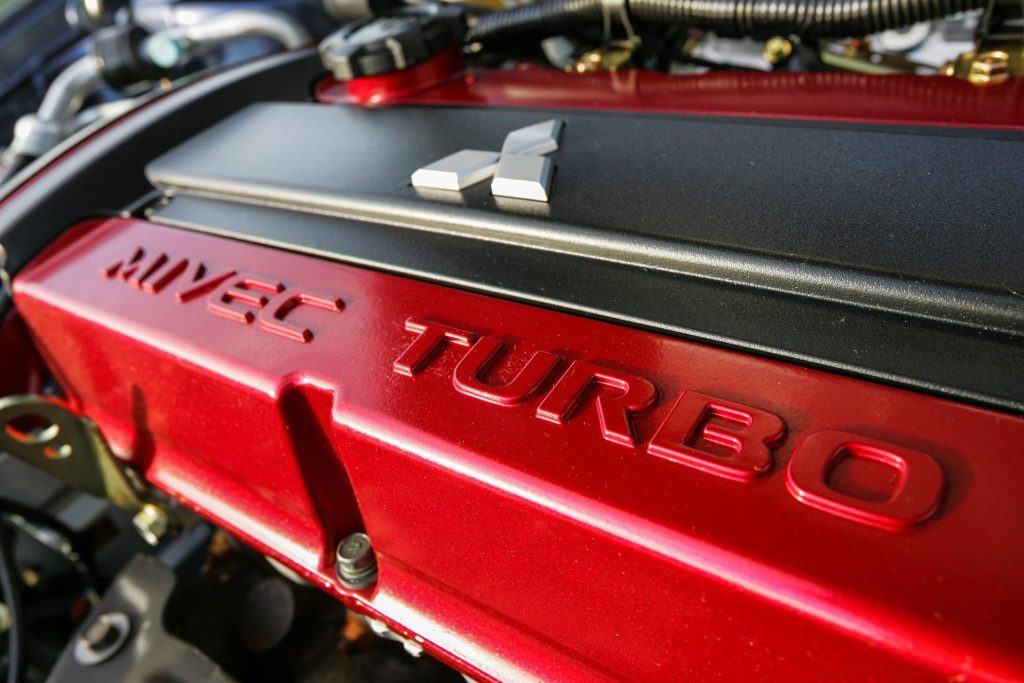
Like its sedan relative, the wagon uses the same Enkei 17” ten-spoke alloy rally rims, rolling on Yokohama Advan A046D high-performance tyres. The rims are painted silver rather than the darker metallic grey used on the four-door version.
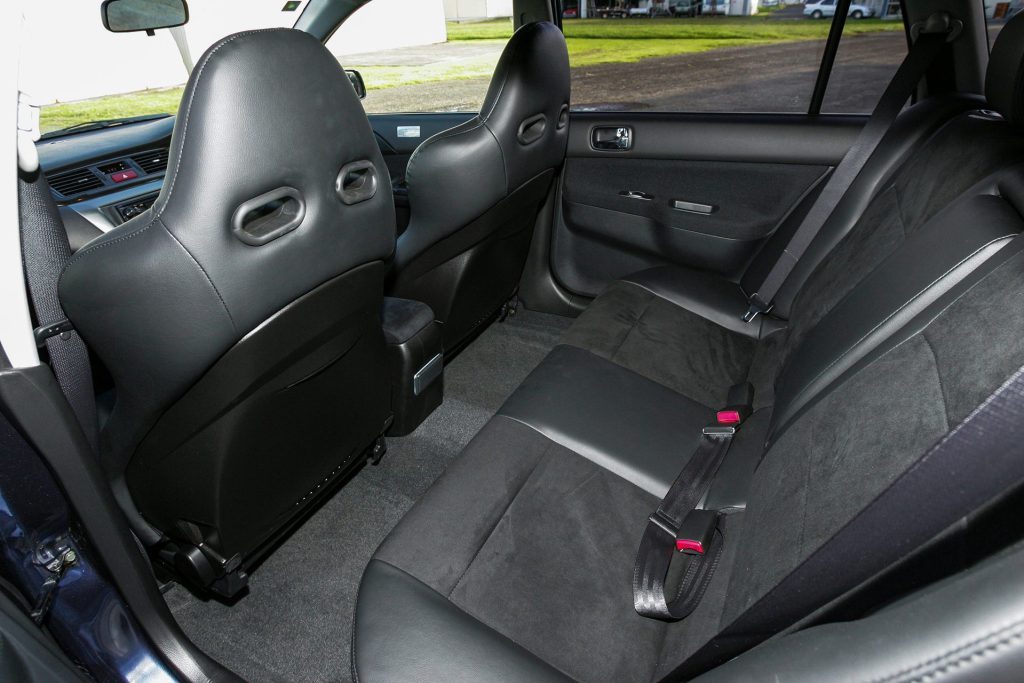
When we tested an Evo IX sedan in the July ’05 issue of NZ Autocar, the team achieved a best of 4.77 seconds for the 0-100km/h dash. We got the wagon down to an impressive 4.99s, which isn’t bad considering it was pretty much new, and weighs over 100 kilograms more than the four-door.
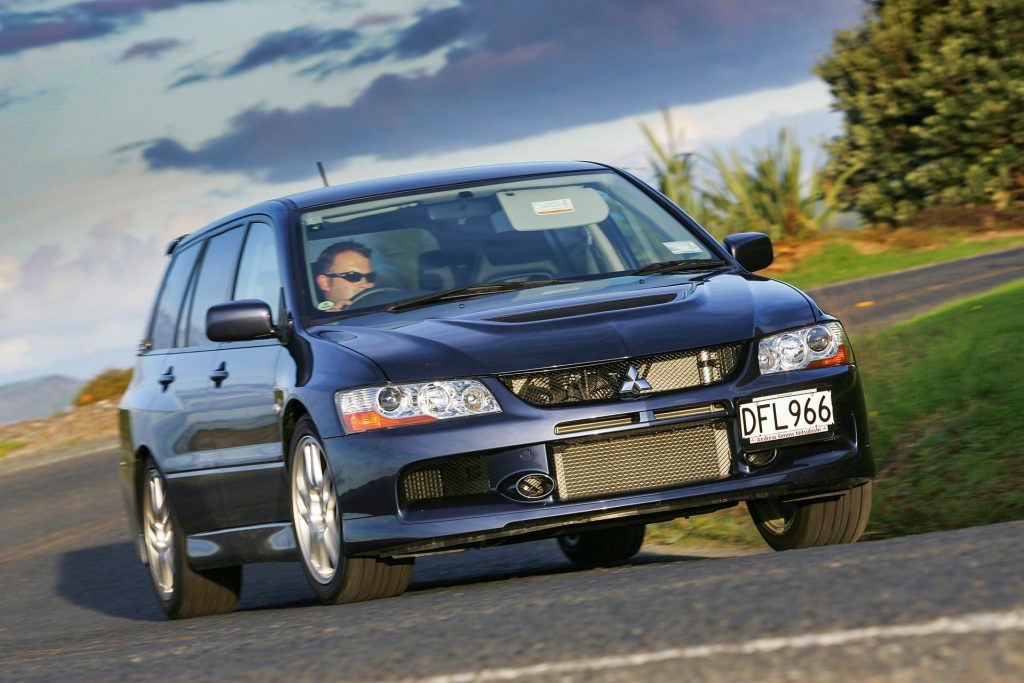
It had considerable impact on all those who saw it, both at the office and around town. Everone wanted one (me included), as the IX really looks the part, especially in five-door (dis)guise. It’s a real Q-ship – and driving one is an experience in itself. I’ve never come across anything with so much grip, and often found myself at first having to open the corner back up, as the turn-in catches the unprepared driver out. The handling is superb, the Brembo brakes awesome, and the turbocharger hit at 3000rpm is progressive, and not too violent. It’s the type of car to own, and to take out on weekends, and find the tightest, twistiest roads around. The fact that it’s a wagon doesn’t even really come into it. Unless you’ve driven a pile of Evo’s, you won’t notice the body-style from the driver’s seat until you look in the rear-view mirror, and see the back window is further away than you expect. Another telling point: you can obviously fit a lot more gear as well!
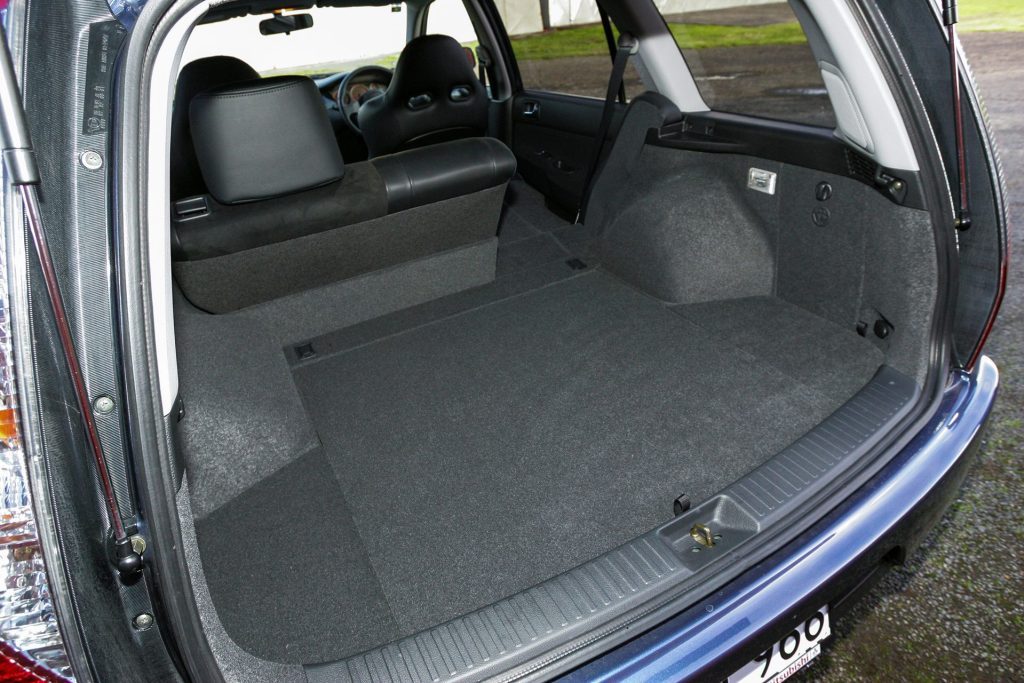
Just how many of these Evo IX wagons made it into New Zealand is unknown. With a limited number in existence, we expect only a handful of them ever arrived on our shores. At the time of writing (2005, remember!) this particular all-but-brand-new wagon cost $56,995 – $5K lower than a new Evo GT, and $10K below a GSR.
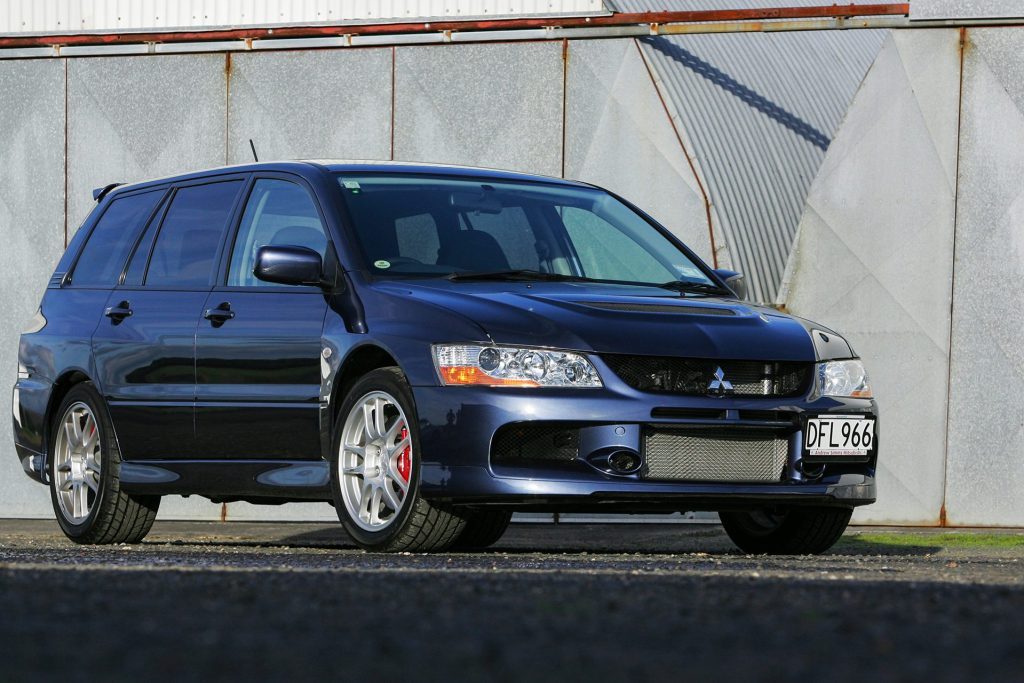
Where are they now?
A quick perusal of the interwebs in 2022 revealed none for sale in NZ, although there were a handful advertised across the ditch. Mostly higher mileage examples, these were asking between AU$36,500 – $65,000, the manual-equipped cars (rightly so) commanding a premium over the detuned (206kW/392Nm vs 200kW/343Nm) examples lumped with the five-speed slush-box.
| Model | 2005 Mitsubishi Lancer Evolution IX Wagon |
| Price | $56,990 (slightly used) |
| Engine | 1997cc, IL4, T, |
| Power/Torque | 206kW/392Nm |
| Drivetrain | 6-speed manual, adaptive AWD |
| Fuel Use | meh |
| 0-100km/h | 4.99sec |
| 80-120km/h | 3.44sec |
| Stability systems | ABS, CBC, AYC |
| Luggage Capacity | 530L |
| Weight | 1550kg |
This article was originally published in the May 2006 issue of NZ Autocar Magazine.
Two tribes go to war in the battle for Asia-Pacific sports-sedan supremacy. The Mitsubishi Evo VIII and Subaru WRX Impreza...
You think they’ve reached a pinnacle and then another generation of Mitsubishi Evolution and Subaru WRX STi hits the launch...
Got a past review you’d like to see posted online?
Our digital archives go back to the year 2000 and we have tested the majority of the new cars released to the New Zealand market during that time.
Let us know which of our historic reviews you’d like to see by submitting the form below.

